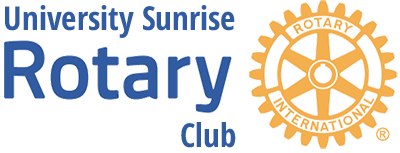
On August 10th, Christy Goff, faced with speaking on such a vast subject as Stress, gave an encapsulated overview supplemented by an exhaustive handout.
Stress is anything that inhibits the balance among physical, emotional, and mental power. It can be external or internal. Physiologically, stress upsets the equilibrium among serotonin, a brain hormone concerned with feeling good; cortisol, an adrenal hormone and glucose, both concerned with the Flight or Fight reaction. This disruption can result in symptoms such as poor cognition, fatigue, depression, and exhaustion. In extreme cases, to wit, burnout, the stress factor(s) must be aborted, lest permanent damage ensue. At times, we need a little bit of stress to keep us going at optimal function.
The speaker posits that stress is treatable, entailing channels in the forms of physical activity, nutrition, and relaxation/sleep. She gave a rundown of the intrinsic benefits of each, and how to go about utilizing them. It is certain that she touched upon experiences of everyone in the audience.
For certainly, stress and coping mechanisms have been with us from early evolutionary times. It has been the property of all of us.

 Katie Leis, Community Development Manager, of the American Cancer Society discussed Relay for Life, annual event to benefit the American Cancer Society.
Katie Leis, Community Development Manager, of the American Cancer Society discussed Relay for Life, annual event to benefit the American Cancer Society.
 Seattle’s degree of growth and development is directly proportional to David Allen’s enthusiasm thereof. A scion of the McKinstray Family, he has done much to further the company’s fortunes.
Seattle’s degree of growth and development is directly proportional to David Allen’s enthusiasm thereof. A scion of the McKinstray Family, he has done much to further the company’s fortunes. The two remaining Charter Members from 1984, John Reynolds and Jim Miller, wish Michael Gillespie well on his last scheduled Club meeting before he leaves
The two remaining Charter Members from 1984, John Reynolds and Jim Miller, wish Michael Gillespie well on his last scheduled Club meeting before he leaves Having kayaked the Mississippi from its origin to Memphis, David Ellingson, outdoorsman extraordinaire, was not satiated. This ultimately enabled him to narrate and colorfully illustrate his journey through the Erie Canal in NY and down the Hudson to New York Harbor. He got as close to the Statue of Liberty as the law allowed.
Having kayaked the Mississippi from its origin to Memphis, David Ellingson, outdoorsman extraordinaire, was not satiated. This ultimately enabled him to narrate and colorfully illustrate his journey through the Erie Canal in NY and down the Hudson to New York Harbor. He got as close to the Statue of Liberty as the law allowed. Neil Strege is Vice-President of the
Neil Strege is Vice-President of the 
 Arnold Swanberg, Resident Historian, spoke characteristically without notes. On this occasion, his topic concerned the last year(s) of World War I.
Arnold Swanberg, Resident Historian, spoke characteristically without notes. On this occasion, his topic concerned the last year(s) of World War I.
 Floating Bridge Brewing
Floating Bridge Brewing An interesting lesson in self-publishing was given by the well-traveled Stephen Murphy, author of “On The Edge: An Odyssey”. His odyssey through the process, the expenses, the legwork, the rejections, and the cost of mistakes, establishes him as one who can persist through a daunting climate. From the time of his inspiration to set down his memoirs of his travels to his current book signings, he learned:
An interesting lesson in self-publishing was given by the well-traveled Stephen Murphy, author of “On The Edge: An Odyssey”. His odyssey through the process, the expenses, the legwork, the rejections, and the cost of mistakes, establishes him as one who can persist through a daunting climate. From the time of his inspiration to set down his memoirs of his travels to his current book signings, he learned: